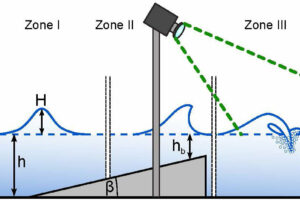Recent legislation — like the Bipartisan Infrastructure Law and the Inflation Reduction Act — gives a huge boost to the nation’s efforts to achieve a clean energy transition.
The energy transition, a global transformation of energy systems away from fossil fuels to renewable and clean energy sources by 2050, is necessary to ward off the worst impacts of climate change. It will entail overhauling our energy resources, systems, economics, policies, and our behavior. It will require a huge expansion of renewable energy sources, the phase out of coal and oil, and increased energy efficiency across the board. It will not be easy. Below are five factors that will be crucial in order to decarbonize our society.
What will the energy transition need?
Money
A decarbonized energy network requires a much greater investment in minerals, metals, and construction materials to produce the same amount of energy as a fossil fuel system, with the money invested up front. Consequently, achieving net-zero by 2050 will entail “the largest reallocation of capital in history” according to the global investment bank RBC Capital Markets.
Cost projections for the energy transition vary because different factors are included, but estimates range from $125 trillion to $173 trillion by 2050. While this is a lot of money, $5.9 trillion was spent supporting the fossil fuel industry in 2020 alone through subsidies, tax breaks, and the unaccounted-for health and environmental damages caused by the industry’s impacts. Ending this support and shifting it to clean energy could help fund the necessary investments. And upfront expenditures for the transition would ultimately result in long-term savings for the world due to less fuel consumption, improved material and energy efficiency, lower maintenance costs, and the avoided damages from climate change impacts.
Investment money will be needed for continued research and development into new technologies, long-term battery storage, better insulation materials, and advanced nuclear energy. Investments are also needed to develop green fuels and green hydrogen for difficult-to-decarbonize sectors that run on intense heat or fuels with high energy density: aviation, shipping, long-distance trucking, and concrete and steel manufacturing. Green hydrogen is needed to make green ammonia as well, because ammonia-based fertilizer is currently made with methane and produces 1.8 percent of global carbon dioxide emissions. Decarbonizing and upgrading the electrical grid and building out global supply chains to support and distribute the expansion of renewables will also require capital.
“To make the energy transition a reality, we need both public and private finance,” said Martin Dietrich Brauch, a lead researcher at the Columbia Center on Sustainable Investment (CCSI) at the Columbia Climate School. “Developing countries, in particular, need substantial amounts of grants and concessional financing from multilateral development banks and development finance institutions, as well as measures to strengthen local financial sectors, to leverage private sector investment.”
CCSI provides recommendations for making this financial support a reality through its Roadmap to Zero-Carbon Electrification of Africa, a report on Decarbonization Pathways for Paraguay’s Energy Sector, and evaluation of net-zero financial sector initiatives.
Minerals and Materials
Replacing fossil fuels with renewable energy will create a huge demand for minerals and materials. Generating one terawatt-hour of electricity from wind and solar will require 200 percent and 300 percent more metals, respectively, than generating the same amount of electricity from a gas-fired power plant.
The World Bank projected that more than three billion tons of minerals will be needed to limit warming to 2°C by 2050. This means a 500 percent increase in demand from today’s levels for minerals like lithium, graphite and cobalt, which are used to store energy in electric vehicle batteries and grid-scale storage. Nickel is used in batteries too, as well as in hydrogen production and geothermal power. Geothermal power also requires chromium, molybdenum, and titanium. Wind turbines need iron ore, aluminum, and rare earth metals such as neodymium, terbium, and dysprosium for their magnets. Solar panels are made with silicon, silver, and zinc. Large amounts of copper are used in charging stations, solar panels, wind turbines, and electric vehicles. Copper and aluminum are also needed for wires and cables to expand the electricity grid.
Securing all these minerals will be challenging, especially since many of them are found in regions with which the US is at odds or where there are geopolitical tensions. For example, China currently controls 80 percent of the world’s lithium and 60 percent of rare earth metals used in electric vehicle batteries. Russia holds 22 percent of the world’s rare earth metal reserves.
The Democratic Republic of Congo, where corruption, conflict, and child exploitation are common, produces 60 percent of the world’s cobalt. Problems in these countries could limit access to the minerals or affect supply chains. To counter China’s domination of rare earths, two rare earth supply chains are now being developed in the West: one involving Canada, Sweden and Norway, and the second with two North American companies partnering to establish a US-Europe supply chain.
Another source for minerals is the ocean floor. Potato-like nodules on the Arctic Ocean floor contain copper, nickel, and rare earths. Norway is exploring deep-sea mining to exploit deposits of copper, zinc, cobalt, gold, and silver. A Canadian company has just completed a test run on the seabed between Hawaii and Mexico, mining 3,600 tons of rocks filled with manganese, nickel, and cobalt. The company claims that the metals in the area it has licensed could power 280 million electric vehicles. International regulators must now decide whether to approve the company for full scale mining, but environmentalists are against it because it could harm the seafloor ecosystem.
Whether on the ocean floor or on land, mining itself, which produces emissions and requires a great deal of energy and labor for extraction and refinement, can harm the environment and local communities. Because investors who are increasingly focused on environmental, social, and governance considerations (ESG) may be reluctant to finance mining projects, miners are attempting to reduce their carbon footprints and raise their ESG ratings.
The massive demand for minerals will likely create a constant flux between supply, demand, and prices. As demand grows, prices will rise, and miners will respond by producing more supply. If prices get too high, there will be incentives to support innovation with substitute materials, which could end up compromising the performance of some technologies. Higher prices could also trigger a shift in the technology used. For example, if solar panels using a substitute mineral become less efficient, the user might shift to wind power, which would then put pressure on a different mineral.
There are strategies that could lessen the demand for minerals, such as redesigning products to be more efficient or to rely less on critical materials, making materials more efficient, using substitute minerals, expanding the recycling and reuse of resources, and improving the maintenance of assets to extend their life. The Columbia Center on Sustainable Investment has resources to enable the sustainable development of such resources while causing the least economic, social, and environmental harm.
Land
Large solar and wind farms need 10 times as much space per unit of energy as coal or natural gas power plants. For example, replacing a one-gigawatt gas plant with a one-gigawatt solar farm would increase land use from 350 to 40,000 acres. Wind turbines, often spaced a half mile apart, could require 30,000 to 250,000 acres to produce one gigawatt of electricity, depending on the landscape and other factors.
Finding enough land for renewable energy in a crowded world is a problem. In Germany, only 51 percent of the land is suitable for wind energy, but of this, only 9 percent is available due to regulatory, environmental, and technical issues. Half of France’s land cannot be used for wind energy because it is protected, near a military site, or along a flight path. In Asia, large-scale solar farms and hydroelectric projects threaten to encroach upon existing farmland that communities depend on.
Many of the best sites for renewable energy are already being used. And suitable sites that remain are going up in price as cities expand and real estate companies search for property to develop. In Germany and the U.S., land values rose almost 10 percent each year between 2011 and 2020.
The areas with the most potential for producing wind and solar energy in the U.S. are not where the energy is needed most. The nation’s windiest area is the middle of the country in states like Kansas, North and South Dakota, Montana, Nebraska, Oklahoma, and Texas. The top solar-producing states are California, North Carolina, Arizona and Nevada.
To get clean energy from where it is produced to the two coasts where most of the U.S. population is concentrated requires new or upgraded transmission lines. A Princeton University report found that if the U.S. is to achieve almost complete electrification of transport and buildings by 2050, it will need to spend $360 billion by 2030 to expand high voltage transmission, and $2.4 trillion by 2050.
One big problem is that many people in rural and suburban areas don’t want to live with overhead transmission lines. For example, in New South Wales, Australia, a group of farmers are fighting the proposed construction of 360 kilometers of power lines to connect renewable energy sources to the grid. A farmer who has lived there for over 20 years explained that if overhead lines are built, he will not be able to use his GPS-controlled tractors under the wires because their signals will get scrambled. He will not be able to place fences parallel to the lines because they will become electrified. Thousands of trees that he has cultivated will be destroyed as well as the habitats they sheltered. In addition, overhead lines have been known to ignite bush fires. The Australian government, however, ultimately has the right to buy the corridor of land.
To build new transmission lines in the U.S., the new infrastructure bill gives federal regulators the authority to overturn state objections and permit new transmission corridors for clean electricity projects that are in the national interest.
But it is not only transmission lines that residents object to. The Sabin Center for Climate Law at the Columbia Climate School has found that in the U.S., 121 local policies restricting new wind and solar projects were instituted across 31 states, and 204 renewable projects were contested across 49 states. These numbers represent 17.5 percent and 23.6 percent increases respectively since last year. In 2021, 10 percent of planned solar installations were canceled during the permitting stage, due mainly to protests.
Other projects crucial for the energy transition are also running into opposition. Piedmont Lithium is trying to build a mine on 1,500 acres near Charlotte, North Carolina. The project will involve razing houses, digging up farmland and woods, and damaging streams. While some neighbors have sold their land for the mine, others who fear the noise, water, and air pollution, are holding out. In Nevada, Native American tribes and environmental groups are trying to stop a lithium mine project in the Thacker Pass, where the country’s largest known lithium deposit sits. It is sacred land with historical and cultural importance for the Paiute people. The lithium company claims to have spent 10 years analyzing and designing the mine according to environmental laws and hopes to begin work in 2024.
To minimize local opposition that slows the energy transition, projects like wind farms and lithium mines should be undertaken with the cooperation and involvement of local stakeholders. Companies need to get to know the communities, build relationships with local leaders and landowners, include them in discussions, and provide incentives to get their buy-in. The Columbia Center on Sustainable Investment has developed resources and strategies for businesses to respect the human rights of communities affected by energy projects. In addition, communities themselves need to understand why the land is needed for the energy transition, why it is important for everyone’s future, and accept the fact that every energy scenario has a downside.
Water
Currently, 10 percent of the freshwater on Earth is used in energy production, but demand for it could grow to 60 percent by 2040, since many clean energy resources require a great deal of water. Yet as climate change brings warmer temperatures and more drought, 33 countries are expected to face extremely high water stress by 2040.
Solar power plants are usually located in dry and sunny regions, but they often need water for cooling and cleaning their mirrors. One study found that 42 percent of the locations that currently produce solar energy will face a water deficit by 2040.
Capturing carbon from smokestacks and storing it underground, which the IPCC deems critical to achieving decarbonization, almost doubles the amount of water a power plant uses per kilowatt of electricity generated. Extra energy must be burned to capture emissions, so additional water is needed to cool the equipment.
Carbon capture technology. Photo: Peabody Energy
As a result, scaling up carbon capture and storage in the U.S. could increase the electricity sector’s water consumption 80 percent by 2030, according to the National Energy Technology Laboratory. Increasing demand by this much would compete with the water needs of agriculture, local ecosystems, and urban areas.
Making hydrogen fuel also consumes water; the process of electrolysis pulls hydrogen from water molecules. An electrolyzer producing 50 metric tons a day of hydrogen requires 500 metric tons of water a day, and twice that amount if the system is cooled by water. To achieve net zero by 2050, the amount of electrolysis needed would consume 18 million metric tons of water per day, equal to 7,200 Olympic-sized swimming pools.
Battery production requires water for various manufacturing processes. Batteries also use water because lithium mining and production consume a great deal of water. Mining in South America’s Lithium Triangle, one of the driest places on Earth, uses 500,000 gallons of water per metric ton of lithium. In Chile’s salt flat Salar de Atacama, lithium mining used 65 percent of the area’s water, competing with the needs of local farmers.
Today, batteries store only a limited amount of energy for a few hours, and research is ongoing to improve their ability to deal with renewable energy’s intermittency. Pumped storage hydropower, which is able to store and release large amounts of intermittent renewable energy, is currently the largest type of grid storage “battery” used in the U.S.
Water is pumped from a lower reservoir to one at a higher elevation when energy is available, such as when the sun is shining on solar panels. When demand for power is high, or when the sun isn’t shining, the water is released to the lower reservoir through turbines that produce electricity. While the system does not consume a lot of water, it needs a large amount of water to operate as well as the right topographical features. Because there are currently 100 projects in development, the International Hydropower Association projects that pumped storage capacity will increase 50 percent by 2030.
Like pumped storage hydropower, nuclear power plants and hydropower plants — which produce 10 percent and 16 percent of the world’s electricity respectively — need water to operate. Nuclear plants consume 400-700 gallons of water with every megawatt-hour of electricity they produce, mainly for cooling, which is why many plants are built on rivers.
About 70 percent of France’s electricity is produced by nuclear power, but recent hotter and dryer summers have warmed rivers and lowered water levels, causing reactors to go offline or reduce output to a minimum. The fifth largest hydropower plant in Spain is shutting down for the first time in its 50-year history because of a major drought. And in the U.S., the Hoover Dam, which provides water to 1.3 million homes, is in danger of shutting down next year due to the drought in the Southwest.
Labor
The International Renewable Energy Agency predicts that jobs in the energy sector will increase from 58 million in 2017 to 100 million in 2050. But while jobs requiring green skills grew 8 percent a year between 2015 and 2021, the skilled green labor pool expanded only 6 percent. Around the world, 77,000 more offshore wind workers will be needed by 2024 as offshore wind expands. Currently, however, there are only “46 people in the world” qualified to work as offshore wind project directors, according to one renewable energy recruitment consultant.
In the EU, skilled labor is already scarce, but the demand for workers to construct wind and solar projects is expected to increase three to fourfold by 2030, with additional workers needed to operate and maintain these assets as well. In the U.S., wind turbine technicians and solar panel installers will be the first- and third-fastest growing jobs over the next 10 years, according to the US Bureau of Labor Statistics.
Besides technicians and installers, skilled workers are needed by companies preparing for the energy transition. Employees are needed with specialized sustainability expertise in areas like carbon accounting, carbon removal, and ecosystem services valuation. Business teams need knowledge of specific sustainability subjects, such as climate-related issues that impact procurement and supply chains. Many employees will need basic understanding of sustainability issues and climate science issues that affect business operations and processes.
Courses offered in conjunction with the Columbia Climate School, such as the Climate and Society program, Columbia’s M.S. in Sustainability Management program, and the M.S. in Sustainability Science program are helping to train future leaders in many of these key skillsets.
The energy transition offers an opportunity to retrain fossil fuel workers and transition them to green jobs; but there will still likely be a skills shortage. To address it, governments and businesses need to invest in training and skills programs. The EPA has information about how to access and train for green jobs. For future workers, schools need to lay the groundwork with STEM education. The United Nations Environment Program has put out a report to help young people develop the skills for green jobs.
The energy transition is a global endeavor
Each country is going to have its own challenges in the energy transition. “Developed countries may have improved access to finance and availability of skilled labor, but lack mineral resources,” said Brauch. “In turn, many resource-rich developing countries need improved access to low-cost and long-term finance, as well as support to train and upskill their workforce.” For this and many other reasons, the global energy transition will require international cooperation. This should include sharing of information and opportunities for energy investments, developing and sharing technologies, and implementing financial commitments and mechanisms that ensure all countries have the resources to invest in the energy transition.
“Even though a just energy transition to a global net-zero carbon energy system will be resource-intensive,” said Brauch, “it is not only necessary to achieve global climate and energy goals, but also doable if the right conditions are in place.”
Source : NewsClimate











Add Comment